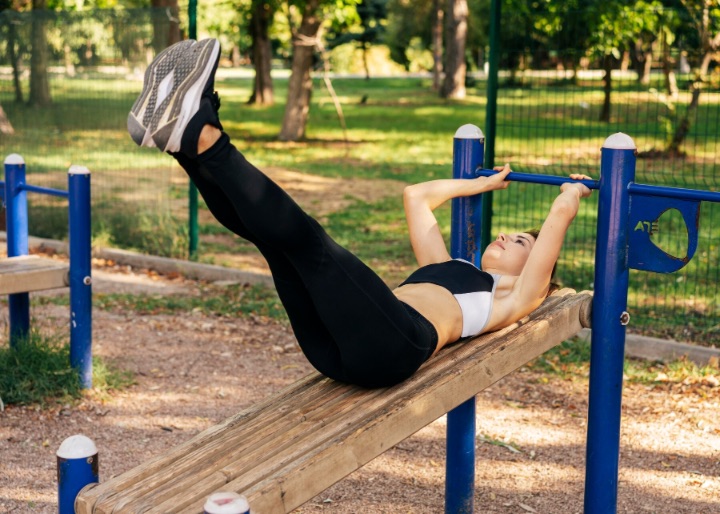Overuse injuries are a common problem faced by many individuals, particularly athletes. Overuse injuries result from repetitive strain on a specific area of the body, leading to pain, inflammation, and discomfort. In this section, we will discuss the symptoms of overuse injuries, available treatment options, and prevention strategies to help you avoid such injuries in the future.
Overuse injuries can range from minor discomfort to severe pain and, if left untreated, can lead to long-term damage to the affected area.
Overuse injuries are common among athletes and individuals who engage in repetitive physical activities. These injuries occur when a specific part of the body is subjected to repeated strain over time, leading to tissue damage and pain. Understanding the causes of overuse injuries can help prevent them from occurring.
The most common types of overuse injuries include stress fractures, tendinitis, bursitis, and muscle strains. Stress fractures are tiny cracks in the bone caused by overuse and are commonly found in the lower extremities.

Photo Credit: pvproductions
Tendinitis is the inflammation or irritation of tendons, usually caused by overuse and repetitive motions. Bursitis is the swelling of the bursae, small fluid-filled sacs that cushion the joints, often caused by repetitive activities. Muscle strains occur when muscles are stretched or torn due to repetitive use.
Overuse injuries can be caused by a variety of factors, including training errors, poor technique, inadequate rest, and improper equipment. Training errors occur when an athlete increases the intensity, duration, or frequency of their workouts slowly. Poor technique and improper equipment can also lead to overuse injuries by placing stress on specific areas of the body.
Early signs of overuse injuries include pain, swelling, and stiffness in the affected area. The pain may be felt during physical activity, but can also occur at rest. If left untreated, overuse injuries can become chronic and lead to more severe symptoms, such as weakness and loss of function.
When treating overuse injuries, the first step is often rest. This means avoiding the activity that caused the injury and giving the affected area time to heal. Depending on the severity of the injury, rest may be necessary for a few days, weeks, or even months.
In addition to rest, physical therapy can be very helpful in treating overuse injuries. Physical therapists can work with patients to develop a tailored exercise program to help strengthen the affected area and prevent further injury. Other modalities, such as massage, heat or ice therapy, and ultrasound, may also aid the healing process.

Photo Credit: Drazen Zigic
In some cases, medication may be prescribed to reduce pain and inflammation. Over-the-counter pain relievers such as ibuprofen and acetaminophen can also help manage symptoms.
Athletes are at a higher risk for overuse injuries due to the repetitive movements and strain placed on their bodies during training and competition. In fact, some studies suggest that up to 50% of all sports injuries are due to overuse.
Some of the most common types of overuse injuries in athletes include:
These injuries can cause significant pain and may require prolonged rest and rehabilitation.
While overuse injuries can be challenging to prevent, there are strategies athletes can use to reduce their risk of injury:
By following these strategies, athletes can help prevent overuse injuries and stay healthy and strong for their sport.
Overuse injuries can be prevented by incorporating specific exercises and stretches into your fitness routine. These exercises can help improve strength, flexibility, and endurance, reducing the risk of injury. Here are some exercises to consider:
The hip bridge is an excellent exercise for strengthening the glutes, hamstrings, and lower back. Lie on your back with your knees bent and feet flat on the ground. Raise your hips so your body forms a straight line from your shoulders to your knees. Hold for a few seconds and then lower slowly. Repeat for 10-15 repetitions.
Calf raises are great for strengthening the calf muscles and improving ankle stability. Stand on a step or curb with your heels hanging off the edge.

Photo Credit: Freepik
Raise your heels as high as possible, hold for a few seconds, and lower slowly. Repeat for 10-15 repetitions.
The hamstring stretch can help improve flexibility and reduce the risk of hamstring strains. Sit on the ground with your legs straight out in front of you. Reach forward with your hands and touch your toes, keeping your knees straight. Hold for 15-30 seconds and then release.
The quad stretch can help improve flexibility and reduce the risk of quad strains. Stand with your feet shoulder-width apart and hold onto a wall or chair for support. Bend your left knee and lift your foot towards your buttocks. Hold for 15-30 seconds and then switch sides.
The plank is an excellent exercise for improving core strength and stability. Get into a push-up position with your arms straight and your hands shoulder-width apart. Your body should form a straight line from your head to your heels. Hold for 30-60 seconds and then release.
Incorporating these exercises into your fitness routine can help prevent overuse injuries and improve your overall health and well-being.
Here are some of the most frequently asked questions about overuse injuries, with a focus on those commonly experienced by runners:
An overuse injury is a type of injury that occurs from repetitive strain on a particular area of the body, without sufficient recovery time. For runners, this can include knees, hips, shins, and feet injuries.
Common signs of an overuse injury include pain, swelling, tenderness, stiffness, and weakness in the affected area. If you are experiencing any of these symptoms, seeking medical attention and rest from your usual activities is important.
To prevent overuse injuries in runners, it is important to gradually increase your mileage, wear appropriate footwear, incorporate strength and flexibility exercises into your routine, and take adequate rest days. It is also important to listen to your body and promptly address any pain or discomfort.
The best treatment for an overuse injury will depend on the individual and the severity of the injury. Rest, ice, compression, and elevation (RICE) can help alleviate pain and injury, while physical therapy and other modalities may be necessary for more severe injuries. Consulting with a healthcare professional for an accurate diagnosis and treatment plan is important.
Running with an overuse injury can exacerbate the injury and prolong your recovery. It is important to seek medical attention and rest from your usual activities until the injury has healed. Once you have fully recovered, you can gradually resume running under the guidance of a healthcare professional.
The recovery time for an overuse injury can vary depending on the individual and the severity of the injury. Mild injuries may heal within a few days to a week with rest and self-care, while more severe injuries may require several weeks or months of rest and rehabilitation. It is important to follow a healthcare professional’s advice and gradually return to your usual activities.